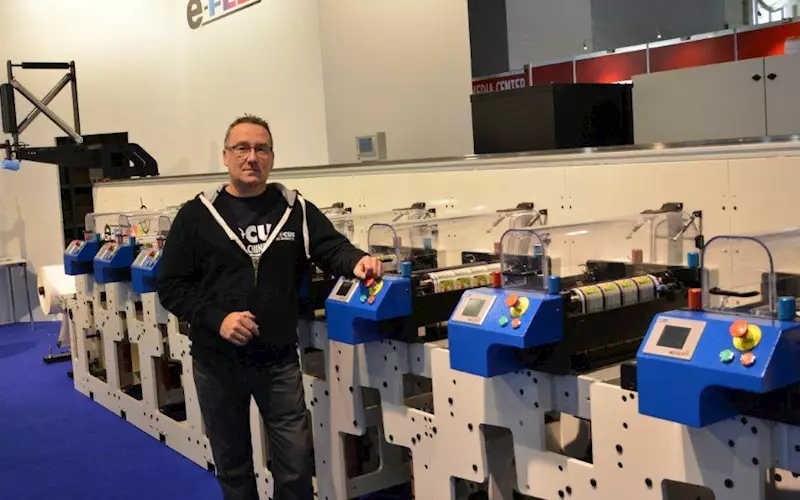“The humble label has become an important consideration for packaging,” says David Lee of Focus Label
In a conversation with PrintWeek India, David Lee, the managing director of Focus Labels.
30 Sep 2015 | By Noel D'Cunha
PrintWeek India (PWI): How have the previous two years, since the last Labelexpo Europe 2013 been for your company? And how was your growth?
David Lee (DL): Business across the UK home market and globally has improved over the last 18 months, installations are close to 2009 figures. A number of reported factors in Europe and China will see if this is maintained.
PWI: How does label printing sector looked like in 2015? What are you hearing from your customers, who have been using your products in the last two years?
DL: The label industry is looking to new technology to improve service with digital integration and push down production costs through waste reduction. As a press manufacturer we have invested our research and design in these areas.
PWI: What is your star product at the Labelexpo Europe 2015? Can you explain what’s new and how will it benefit the customers?
DL: All our equipment presented will be incorporate servo drives and digital printing features. Our existing customers will benefit as tooling will be fully interchangeable, ensuring modernisation is seamless.
PWI: In terms of functionality, has the role of labels enhanced or it still is a piece of decoration?
DL: The humble label has become an important consideration for packaging, apart from providing legal information requirements and branding, enhancing the product and in some cases reducing packaging waste.
PWI: New guidelines for product security and ingredients disclosures are being introduced on a regular basis. Do you see labels donning a bigger role here?
DL: Yes, without doubt label technology is an excellent way of delivering large amounts of information. For example multi sheet labels, peel and read.
PWI: There are new substrates, linerless to name one, plus processes. Which are the ones that are especially challenging when finishing labels printed on these substrates and what should the labellers do to address these challenges?
DL: They should welcome new ideas, investigate new processes in detail and be open to meet new challenges in order to have the edge over their competitors. Be prepared to take that knowledge to your customer, so they are dependent on you.
PWI: Short-run work and just-in-time delivery are fast becoming the norm. And to remain a competitive supplier and meet these changing demands, what should the Indian label printers do to improve their production methods? How does your products help in this?
DL: Most equipment manufacturers have designed new equipment meet modern demands of shorter runs, to reduce set ups and waste. We are integrating digital printing systems as part of a complete printing and converting line as a single operation.
PWI: Substrates and consumables are a big part of the label producing cost. Reducing them would mean increasing margins. What are the ways in which label printers can minimise waste and become more cost-effective to meet today’s fast-evolving production requirements and deliver greater commercial advantage? Can you give an example?
DL: Many modern press designs include pre-register systems saving material and time in order to use the press more effectively over a longer period of the working shift. Plan a job schedule in advance around your tooling and materials. Monitor your actual performance against expected performance and act upon the data.
PWI: What do you see changing and growing in the label marketplace?
DL: We are already seeing more traditional flexo printing and digital integration with variable data applications. There will be an increase in print speed from Digital Ink jet and print resolution will improve close to commercially accepted standards for process colour printing.














 See All
See All